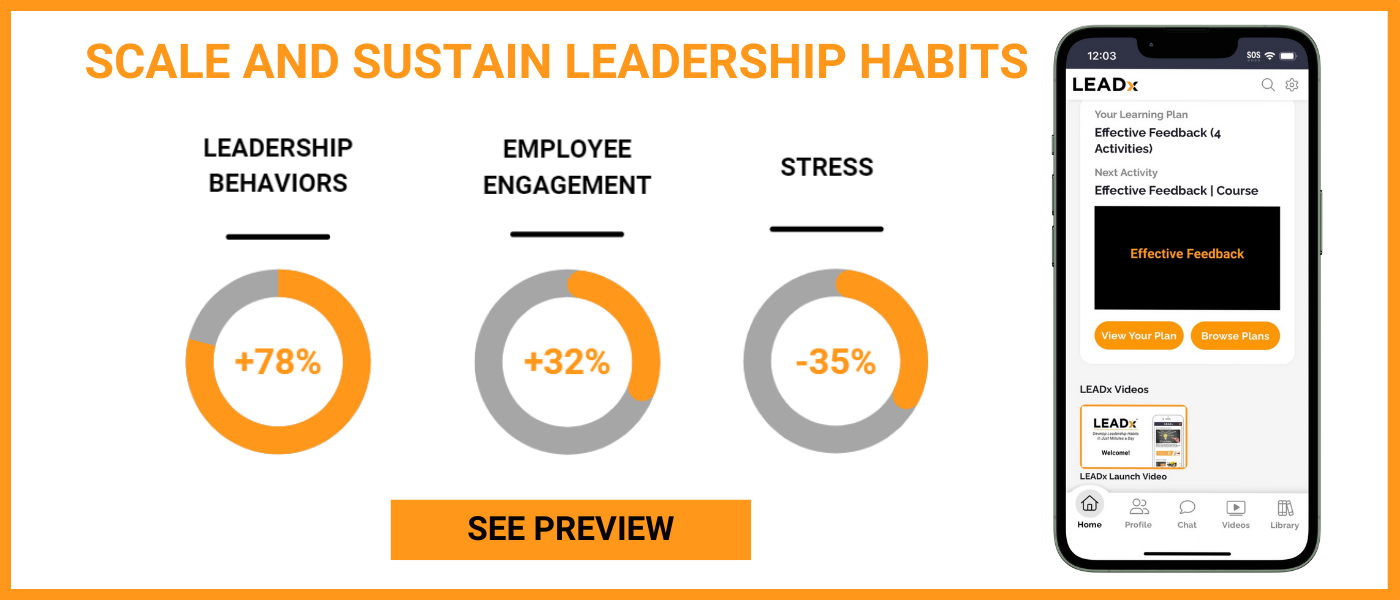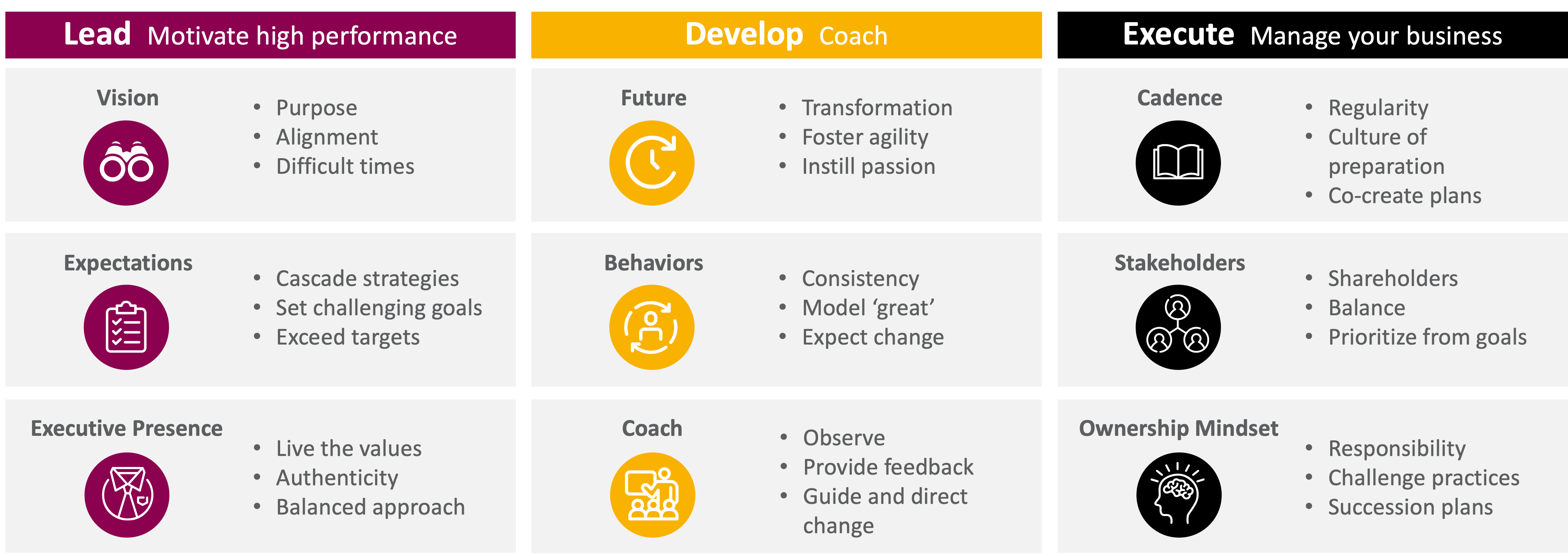
Despite the ever-growing need to have a pipeline of leaders ready to step up, many companies flounder to put together a strong emerging leading program. In fact, many don’t have one at all. The LEADx 2024 Leadership Development Benchmark Survey shows that 32% of leadership development teams have no formal offering for emerging leaders.
 To learn about what it takes to create a thriving emerging leader program, I had the chance to connect with Josh Chapman, Global Director Leadership Development at AstraZeneca Oncology.
To learn about what it takes to create a thriving emerging leader program, I had the chance to connect with Josh Chapman, Global Director Leadership Development at AstraZeneca Oncology.
Four years ago, the company was emerging from the COVID-19 pandemic and recognized the opportunity to take its formal leadership development to the next level. This meant that Chapman’s emerging leader program wouldn’t just be new; it would be the only in person emerging leader program at AstraZeneca Oncology.
“Our great Associate Director, Jodi Taylor, and I shared a goal from the very early days which was to make this program high impact and meaningful for all sorts of participants across the organization,” Chapman emphasized, “So our team interviewed and surveyed over 30 stakeholders across several countries. Based on what we learned in those interviews and the way many individuals like to consume learning content, we decided to create something that would look and feel like a graduate school program. When we decided to brand it so that we could socialize it and gain buy in from senior leadership, Anita Okonak from our team suggested “legacy leadership,” or leaders who leave a lasting impact on others at AstraZeneca.” It really stuck and became the inspirational rallying cry for our whole program.
AstraZeneca Oncology called the program AMP, the Aspiring Management Program.

How AstraZeneca Used A Nomination Process to Build Its Cohort
Audience selection is a common fail point when it comes to designing an emerging leader program. Many leadership development teams will put too much money and time into nitpicky selection (for example, hiring an expensive I/O Psychologist to whittle your audience from 20 to 10 emerging leaders). Many others will fail to build out a cohort that’s genuinely excited about leadership and the opportunity to develop.
AstraZeneca did an incredible job of striking this balance. Keeping in mind that it was their year one pilot, they decided to put 22 emerging leaders in their first cohort, with plans to continue to roll out more cohorts in the future.
To be up for selection, emerging leaders needed to meet a set of minimum criteria that were measurable and objective, such as:
- Good performance ratings for a couple of years
- In-role for a couple of years
- Demonstrated leadership potential
- Strong yearly performance reviews
On top of this, Chapman and his team made sure to select people who were deeply motivated to learn and grow. “Many leadership programs fail because they select and train the wrong batch of people. They select people who don't value development, who don't have a mindset of growth.” To account for this, Chapman made sure the criteria also included some more subjective criteria, such as:
- Do others on your team see you as a peer leader?
- Do you love development?
- Do you have a growth mindset?
- Are you open to coaching?
Each business area within AstraZeneca Oncology was allowed to select 3 participants, something that resulted in representation from a variety of departments. “We ended up with sales reps, medical practitioners like PharmD's, marketers, diagnostic experts, managed care account directors, and more,” he said. And this variety was all within a cohort of just 22 people. Because we’d developed a program that taught foundational leadership skills, they all found value and relevancy in the content.
Choosing the Content: Three Core Pillars of Legacy Leadership at AstraZeneca
Three pillars of legacy leadership at AstraZeneca served as the foundation for AMP:
- Lead: Motivate your team for high performance.
- Develop: Coach your team.
- Execute: Manage your business.
Here’s a breakdown of each pillar and its three core components. All were an integral part of AMP.

Central to the content of AMP was the idea that leadership development should be practical. “If you go on LinkedIn, everyone in leadership development is posting about how ‘managing is bad’ and ‘leading is good,’ but that’s an overgeneralization that ignores critical and practical management skills,” he said. “When I spoke with countless leaders at AstraZeneca, they emphasized wanting to learn tangible things like how to have tough conversations, how to write performance feedback, and how to make good leadership choices.” AMP addressed all three. Chapman’s team blended key management skills (e.g., writing performance feedback) together with key leadership skills (e.g., authentic leadership).
Variety and Depth Drive the Graduate School Feel of AMP
To drive a graduate school feel, Chapman’s team made the program four months long and took a blended, application-focused approach to learning. This included five main program components:
1. Biweekly 90-minute calls on key topics: Chapman’s team would run highly interactive 90-minute workshops on key topics like authentic leadership, coaching, and more. “For example, when we did a call on authentic leadership, we made it a moving, interactive session. It wasn’t just a lecture. We put participants through simulations and breakouts, all in 90 minutes,” Chapman explained.
2. Homework that’s memorable, personal, and sticky: To follow these 90-minute workshops, Chapman’s team put together unique, memorable homework assignments. Emulating graduate school, they created assignments that were personal, emotional, practice-oriented, and memorable. For example, after learning about authentic leadership, participants did a reflection exercise where they thought back to their favorite leader and what made that person so authentic. Then, they actually reached out to that person for a quick interview where they asked three questions:
1) What kind of leadership potential did you see in me?
2) What are my blind spots?
3) What’s your advice for me for leading authentically?
Participants recorded a three-minute reflective video about what they learned from that person and shared it with each other in their peer learning network. Many participants and their previous leaders were emotionally moved by the experience.
3. A peer learning network hosted on Facebook: Run the same way graduate schools use learning systems like Canvas, Chapman’s team used Facebook as a peer learning network. They would, for example, give participants a journal article, have them read it, and then ask them to post a response and comment on other people’s posts. Participants would also shoot videos of themselves reflecting on important topics and assignments and post these to the group.
4. Highly involved mentors: A group of highly engaged mentors helped bring learning to life with real examples and regular coaching conversations. Mentors also helped supplement manager involvement. “Realistically, some managers will care a lot about leadership, and others will care less. Rather than rely entirely on managers to help pull learning through and help participants stay engaged, we tapped five highly involved mentors to support and coach our participants,” Chapman explained.
5. A deep dive simulation: Emerging leaders spent a full day in an immersive simulation, experiencing what it’s like to be a first-line leader and practicing everything they’ve learned over the previous four months. For example, one team member was labeled on paper as the best member of the team. “But if you do your coaching well,” Chapman said, “you find out that they’re not actually a positive, engaged team member.” All conversations are recorded and used for feedback and learning.
Measuring Success: An Immersive Simulation And Pre- and Post-Program Assessment Results
Chapman and his team measured success in two main ways. First, he conducted a before and after behavioral assessment of critical skills. Each participant was evaluated on their ability to do things like “have a difficult conversation.” After the program, they revisited each area to check in on progress. Secondly, they used the simulation as an opportunity to evaluate each participant’s skill growth.
Leveraging an MBA Approach to Make Learning Stick
When you look at the success of AMP, one thing is clear: To build a thriving emerging leader program, you need to prioritize practice and behavior change. And that’s exactly what Chapman’s team accomplished by blending together a variety of modalities of learning and practice.






